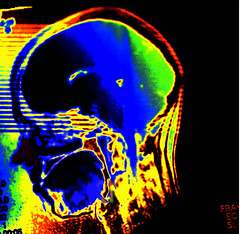Games for health with SharpBrains CEO, Alvaro Fernandez

Games are a very powerful medium for health, education and social impact. The phenomenon was well captured at the Games for Health conference. Alvaro Fernandez, CEO of SharpBrains, created the Cognitive Health Track for the conference, where he covered convergence of the scientific, technological and demographic trends that led to creation of a new market: software and online applications that can help people of all ages assess and train cognitive abilities.
In part one of this interview series, I talk with him about his book and the market positioning for this emerging industry.
What was your motivation for writing this book?
The origin was the market report that we published last year. As a company, SharpBrains spent two years interviewing scientists, reviewing published research, talking to companies and developers, health care providers and insurance companies, trying to understand this emerging industry of brain fitness. And then we published State of the Brain Fitness Software Market 2008, last year, and a 2009 update in March this year.
Very quickly we saw a strong interest from consumers and health care professionals trying to make sense of the field:
- What are the implications of different areas of research?
- How to improve brain health and brain function?
- How to compare different interventions?
- How to compare the validity of claims and different products in the market?
The complete market report was very expensive for individual consumers and health professionals so we decided to prepare a book that is more relevant to individual users, who have different needs than the decision-makers we serve via market reports. In the Sharp Brains book, we summarized the research and 21 product reviews.
How did you position this emerging brain- and cognitive-training field? On one hand there are evidence-based guidelines practiced by the medical profession. On the other end of the spectrum are the self-help books. In what section of a bookstore shall I look for your book? In your research and writing, how did you navigate the boundaries between the clinical side and the self-help side?
As a company we are squarely on the evidence-based research side. We think there is a lot of exciting research, from new insights into how the brain works to evidence-based guidelines that combine the importance of nutrition with stress management, with physical and mental exercises. When assessing the products we always start with a review of all published studies involving those specific products and then help readers understand the specific qualitative benefits derived from using those products. And that is also where we see a lot of confusion. There is nothing like a general solution; a product that helps everyone for every objective they have in mind. But there are a variety of products that clinical trials have shown to have clear benefits for specific groups of people with specific priorities. So as long as people understand that these are new tools and one has to learn how to select a right tool and how to use it, we think the field can be extremely useful.
The interesting question is how these programs are going to be perceived. Will they be perceived as medical interventions or educational interventions, or perhaps even as fitness programs? Everyone now understands that you can go to a gym and have access to a variety of tools: some of them train the extremities, others provide core strengths or cardio training. We do see a lot of interest right now in the cognitive training tools from both the health care and the fitness community.
The report is mostly U.S.-focused. Do you see the brain fitness phenomenon in other parts of the world?
Yes, the report was focused on the U.S. The book is more general because that research can be applied everywhere. We are getting many inquiries for book reviews from publications in the UK, in Northern Europe and also Asia. So we have had inquiries from publishers in Japan and Korea who want the translation rights for the book to publish it there. So clearly it’s a global movement based on the aging population trend in many developed countries.
The longer lives we have, obviously the more pressure we are putting on our brains and the more we need to focus on preventative measures to ensure and maintain our brain functions. This is a global phenomenon. The reason why we focused our report first on the U.S. is because here is where we saw a more complex environment. In places like Japan or the UK most of the conversation now is around Nintendo and other similar games that have no evidence behind them. The U.S. has a more mature marketplace that we wanted to understand better. When I talk about the U.S., I am including all my respect to Canadian friends. We talk a lot about what Baycrest is doing in Canada. We focus on North America as the leading market.
From the research point of view, from the policy point of view and also from the market point of view, in the rest of the world there is a lot of interest but I think they are a bit behind in that the exclusive emphasis seems to be in Nintendo-like games with little understanding of different programs. Often the programs are only in English and haven’t been translated into many other languages, so it’s a barrier. Still, we do see this as a global phenomenon.
* * *
Read Part Two of this three-part interview series: “Brain fitness: Casual gaming or preventative medicine?“